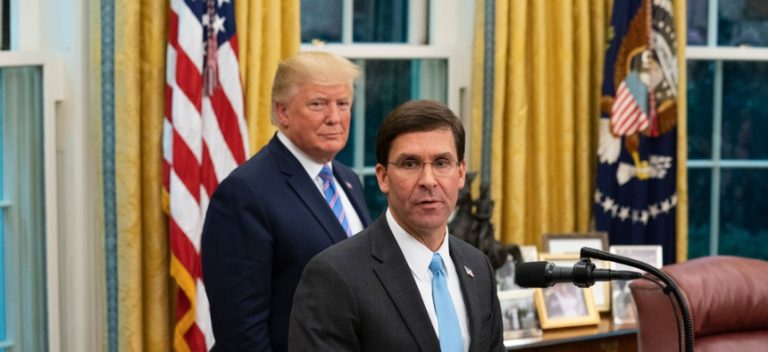The nation’s largest federal employee union urged lawmakers to include collective bargaining protections and fix a soon to be implemented paid parental leave law.
WASHINGTON D.C. (PAB)---
The nation’s largest federal employee union on Thursday urged lawmakers to include a number of workforce provisions in the compromise version of the 2021 National Defense Authorization Act, including collective bargaining protections and language to ensure all federal employees are entitled to paid parental leave.
Althea Predeoux, legislative director for the American Federation of Government Employees, sent a letter to the leadership of the House and Senate armed services committees as lawmakers prepare to go to conference committee to iron out the differences between the two chambers’ versions of the annual Defense policy bill, which, as must-pass legislation, often carries provisions affecting the entire federal workforce.
Predeoux stressed that lawmakers should pass language making technical corrections to the law providing up to 12 weeks of paid leave for federal employees in the event of the birth, adoption or foster placement of a child, codifying that the new benefit is available to all federal workers. That law, enacted as part of the 2020 NDAA last year, only guarantees paid parental leave to Title 5 employees and Transportation Security Administration screeners, although agencies who employ non-Title 5 workers like the Veterans Affairs Department have indicated that for the time being, they will treat the law as if it applies to all employees.
AFGE also called on lawmakers to include language that would prevent the administration from acting on its authority to exempt the Defense Department from federal labor law on national security grounds. Earlier this year, President Trump signed a memo delegating his authority to bar collective bargaining at civilian Defense Department components to Defense Secretary Mark Esper, citing the need for “flexibility,” although Esper has yet to exercise his new power.
“Please include in the FY 2021 NDAA Section 1102 of the House passed bill, ‘Limitation on authority to exclude employees from chapter 71 of Title 5,’ to preserve the continuation of collective bargaining and union representation for civilian employees,” Predeoux wrote. “On January 29, 2020, a presidential memorandum, unsolicited by the secretary of Defense, provided the secretary of Defense broad authority to exclude DOD agencies and subdivisions from being covered under the Federal Service Labor-Management Relations Statute, which outlines collective bargaining rights for federal employees.”
Additionally, the union called for lawmakers to include a provision that would ensure that the locality pay maps for the General Schedule and the Federal Wage System are aligned, which would provide a financial boon to the blue collar federal employees on the latter pay scale.
“The General Schedule locality boundaries are drawn, inter alia, according to commuting rates within and among the counties surrounding metropolitan cores, which is the proper way to define local labor markets,” Predeoux wrote. “However, the Federal Wage System wage area boundaries were drawn mostly in the 1950s, reflecting the location of large military installations that employed most federal hourly workers at that time . . . Thus, two sets of hourly workers within a GS locality will get different wages while all the GS workers within the locality will get the same rates.”
The Trump administration, in a veto threat against the House version of the bill, said it was opposed to both the collective bargaining protections and the effort to align the General Schedule and Federal Wage System locality pay areas. (news sources: Government Executive/rajawalisiber))










